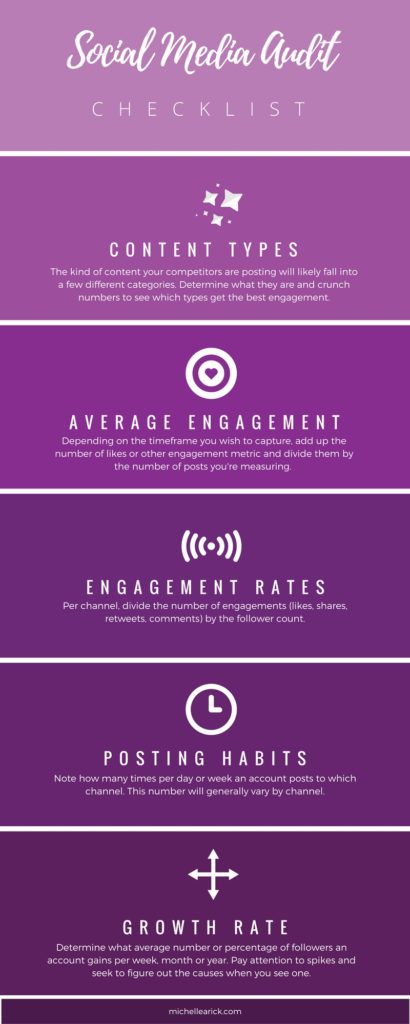Insanity: doing the same thing over and over again and expecting different results.
Einstein was right. I know that’s practically a given, but in this case, it’s particularly true. As a professional, you know that running competitive audits are like taking vitamins: you may want to forget them from time to time, but you do it because it’s good for you.

Now, getting into it…

Who should you monitor?
Competitors of multiple sizes
Let’s say your company sells yoga mats. Follow giants in the industry like Gaiam and lululemon, but also a smaller player like Tomuno for diversity.
Popular accounts in your niche
You sell mats, but yoga is a huge niche, especially on the social media scene. Follow studios, influencers and related brands (such as yoga apparel makers) to get an idea of what kind of content they post, what kind of content performs well for them, and what kind of ideas you can borrow without losing relevance to your business goals.
Brands you admire
These brands don’t necessarily have to be directly related to what you’re trying to accomplish with your account. Nike is a brand that many admire. They have excellent advertising strategies, and their social media accounts are no slouch, either.
Sure, they’re in the yoga space now, but even if they weren’t it’s good to have a “reach” brand that cranks out the kind of content you aspire to have. After all, you need a target to reach a goal!
What kind of metrics should you keep an eye on?
Average engagement
Determine the average engagement per channel. You really can do this just by eyeballing, or if you wish, you could crunch the numbers based on what you see.
Instagram: average likes, comments
Facebook: average likes (reactions), comments, shares
Twitter: average retweets, likes
Pinterest: average repins, likes
Linkedin: average likes, comments, shares
Engagement rates
On Instagram and Facebook, look at the number of fans or followers an account has and divide it by the average number of likes their posts are getting. This will serve as a great indication of how involved their community actually is. If you’d like to determine what a good engagement range is, here’s a good guide. Just remember that it can vary heavily between industries.
It’s a bit harder on Twitter, but if you see strong like and retweet numbers, that’s a sign that delving further into that account’s strategy may be worth the effort. Keep in mind that Twitter has stagnated and is less of a priority for brands, so unless your Twitter is very important to your brand, take this data with a grain of salt. A lot of brands are putting less elbow grease into Twitter than other social media channels.
Growth rates
This can be tricky because it really is a lot to keep tabs on manually. If you can afford a software like SimplyMeasured, these reports can be easily automated for you.
The reason growth rates are important is that you can dissect major spikes for clues as to what may have earned a brand a surge in growth. If you notice a growth spike after a popular influencer mentioned them or if they hosted a contest, you might consider trying that out.
Posting habits
How many times per week does your competitor seem to post on each channel? If they’re posting daily, is it more than once a day? How many? Do this for every channel except Pinterest, which is relies less on time sensitivity and more on image and content quality.
Content categories
Divide an account’s content into different kinds of categories. Some examples for a yoga-centric account might be:
- Inspiring quotes
- Yoga tips
- Product shots
See if one category has higher engagement than others, and consider how you can adapt a similar category for your business.
Additional questions to ask yourself about the competition
How do they handle comments? Do they respond, and if so, are they warm and enthusiastic about it?
What are people saying about them? If they have a personalized hashtag, check it out and see if they have customers actively posting about their product.
Audits can give you a better idea of what success should look like in your industry, help you set goals, lend new ideas for content testing and figure out how to turn the competition’s weakness into your strength.
Featured image credit: Alison Marshall of Wonderlass
Leave a Reply